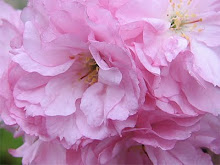
(Picture I took of a rice paddy in California.)
Here is a list of what's healthy to eat and drink on a macrobiotic diet (see Chapter 5, "Ten Healthful Ways Of Eating And Drinking", in Zen Macrobiotics, by George Ohsawa):
1) Cereals — unrefined whole grains — as much as you like as long as you chew thoroughly (50-200 times). Whole grains are the foundation of a macrobiotic diet, and are called the "principle" foods. They should be a major part in every meal. Whole grains are better when they're rinsed and soaked in water overnight before cooking.
2) Vegetables — in season and locally grown (except for eggplant, tomato, or potato, which are too yin) — and wild vegetables — like dandelions, burdock, watercress, etc. — and wild seaweeds — like kombu, wakame, nori, etc.
Vegetables, wild vegetables, and seaweeds are "secondary foods" in the macrobiotic diet, and are usually eaten in smaller quantities than whole grains. Vegetables should not be soaked in water. Seaweeds, on the other hand, are dried (unless you get them straight from the ocean) and some are better when you soak them in water for 15 minutes before cutting them into pieces.
3) Animal foods that are free from chemicals (in the growing or processing of them), such as wild birds, fresh fish, shellfish, fertilized eggs, and organic dairy products, are "special foods" in the macrobiotic diet. They are eaten less frequently and in smaller quantities than principle and secondary foods.
4) Fruits, nuts, seeds, salads (raw vegetables), desserts, and beverages are also taken in smaller quantities than whole grains and vegetables. (See "Ten Macrobiotic Diets By George Ohsawa.")
5) Natural sea salt (unrefined)
6) Soy sauce, macrobiotic quality
7) Miso, macrobiotic quality
8) Gomasio — ground roasted sesame mixed with sea salt
9) Umeboshi plums, paste, or vinegar
10) Undyed, bancha or kukicha tea
11) Water that is pure, free from chemicals, with no additives or carbonation (no fizz!)
Cooking (boiling, steaming, pressurizing, sauteeing, frying, baking), drying, and aging/curing are all processes to make a food more yang. Adding water or oil makes the food more yin.
Some cooking oils are less yin than others, such as sesame oil (unrefined). This makes sense when you compare the size of a tiny sesame seed to, say, the size of an olive, which is also a tree fruit rather than a seed. (Small = yang, large = yin, seeds = closer to the ground/beginning of life = yang, fruits = further from the ground/ending of life = yin.)
See also:
Ten Macrobiotic Diets By George Ohsawa
What NOT To Eat (Or Drink) On A Macrobiotic Diet
Related Blog Articles:
What Is A Macrobiotic Diet, Really?
What Is The Macrobiotic Centering Diet?
My Notes On The Macrobiotic Centering Diet






















































